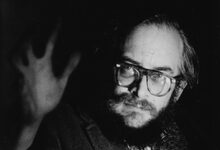- Images (1)
- Liens (1)
- Agenda (0)

|

|
Harry Smith was an artist whose activities and interests put him at the center of the mid twentieth-century American avant-garde. Although best known as a filmmaker and musicologist, he frequently described himself as a painter, and his varied projects called on his skills as an anthropologist, linguist, and translator. He had a lifelong interest in the occult and esoteric fields of knowledge, leading him to speak of his art in alchemical and cosmological terms.
Harry Smith was born May 29, 1923, in Portland, Oregon, and his early childhood was spent in the Pacific Northwest. Smith's father, Robert James Smith, was a watchman for the local salmon canning company. His mother, Mary Louise, taught school on the Lummi Indian reservation. Robert Smith's grandfather had been a prominent Freemason who was a Union General in the Civil War. Harry's parents were Theosophists, who exposed him to a variety of pantheistic ideas, which persisted in his fascination with unorthodox spirituality and comparative religion and philosophy. By the age of 15, Harry had spent time recording many songs and rituals of the Lummi and Samish peoples and was compiling a dictionary of several Puget Sound dialects. He later became proficient in Kiowa sign-language and Kwakiutl. In addition to developing complicated systems for transcription, he also amassed an important collection of sacred religious objects, one of a number of museological endeavors that occupied Smith throughout his life.

|
EARLY ABSTRACTIONS N° 1,2,3,4,5,7,10.
1939-1956 / couleur / sonore / simple écran / 22' 00 / 86 € distribution : 16mm |